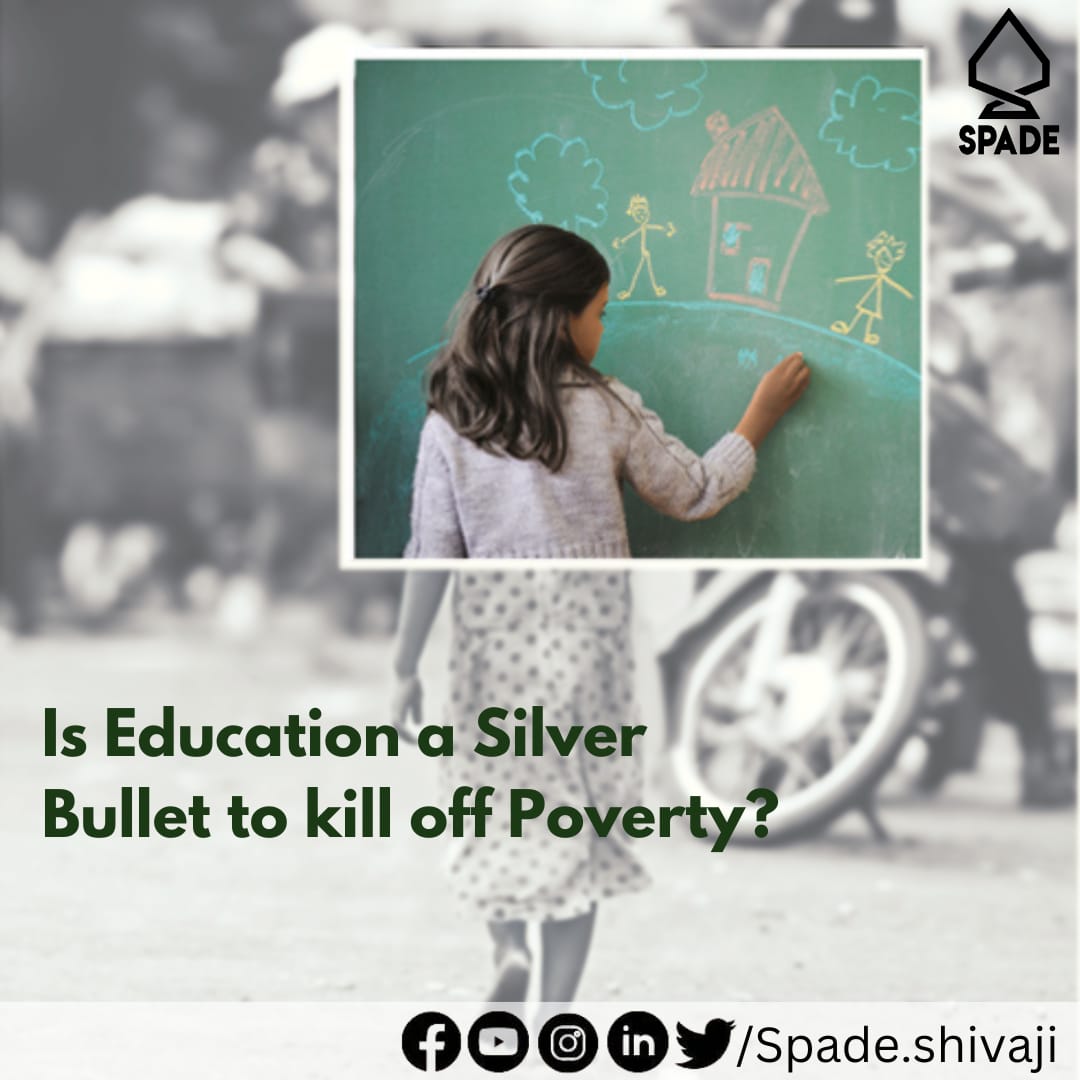
Is education a silver bullet to kill off poverty?
11.1% of the Indian population lives under the poverty line in India. The
sizeable population struggle to afford food, shelter and clothing around the year. The
struggle for life essentials doesn’t allow for time and money to acquire other basics like
education and health. Education could help them escape the life of poverty but they are
often not able to access it. Education is an elusive cycle, the poor can’t access it and
lack of it decreases their chances of employment leading more people to fall below the
poverty line.
Moreover, poverty forces the young into child labour and dangerous
jobs. The missed opportunity of getting an education reduces their chances of improving
livelihood options. Hence they continue working in factories. As per the Ministry of
Education, the Government of India reported Gross Enrollment Ratio in 2019-20 was 51.4
in Higher Secondary education which reflects the dire state of education in India. The
lack of resources to fund a child’s education is one of the
major factors behind few enrolments in schools. For several decades, poverty has been
driving children out of school which leads to multi-fold social problems.
Therefore, there is an urgent need to have a coordinated effect to provide educational
facilities for the poor. Foremost should be the strengthening of the public schooling system
to establish a quality education framework in the country. The government has recently
announced the PM Schools for Rising India (PM SHRI) scheme to upgrade 14500 schools all over
the country which will improve the quality and free education for the poor. Providing
quality education is necessary for a country like India in order to efficiently utilise its
demographic dividend. The scheme provides subsidised or free education should account for
gender inequality existing in society. The schemes should provide special provisions for
girl children through conditional cash transfers. Kanyashree scheme of the West Bengal
government has been successful in reducing girl child drop rates in secondary and higher
education. Therefore, more such initiatives should be undertaken by the government for
ensuring access of education to poor.
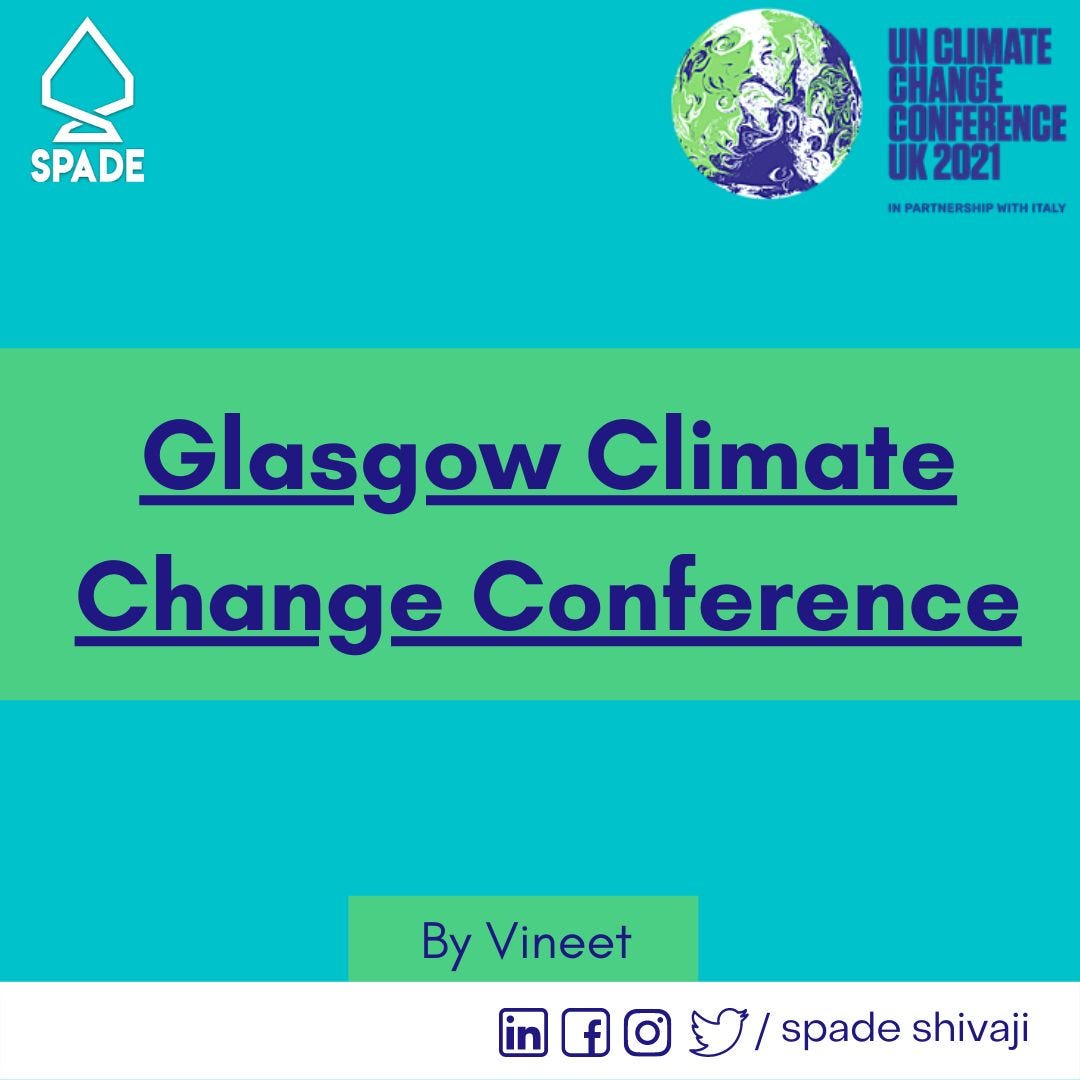
Glasgow Climate Change Conference
The Glasgow Summit officially termed as 2021 United Nations Climate Change
Conference or more
commonly as COP 26; was hosted by the UK this year from 31st October.
The annual
conference is held to analyze the progress in
tackling Climate Change and try to establish goals to reduce Green House Gas emissions. At
COP
26, leaders from 190 nations along with experts, researchers, and citizens took part to
discuss future plans of action on climate change with the primary aim to finalize rules
for the implementation of the Paris Agreement 2016.
COP 26 was announced soon after the assessment report released by
the
Intergovernmental Panel on Climate Change (IPCC) on Earth’s climate and raises
serious concerns
regarding the future of humanity.
COP 26 has tried to address the concerns regarding impeding Climate threats and
introduced declarations to tackle them. It is the first time since the Paris Agreement
in 2015 that countries are required to upgrade or resubmit their pledges known as
Nationally Determined Contributions on tackling emissions of carbon dioxide. The Glasgow
agreement has emphasized that stronger action in the current decade was most critical to
achieving the 1.5-degree target.
Financing such lofty climate goals requires a massive amount of resources. The developed
countries are historically obligated to finance Green Projects in developing nations.
The developed countries had promised to mobilize at least $100 billion every year from
2020 but the deadline has now passed away and the first world has affirmed that they
will arrange finance by 2023.
Parallel Initiatives:
Various countries announced parallel goals that are not part of the official COP
discussion. Glasgow Summit certainly has accelerated the efforts of various countries.
A. Indian Prime Minister announcement also falls in the same category. India has
provided 5 Goals to reduce dependence on fossil fuels and to keep a check on greenhouse
gas emissions.
· India will increase its non-fossil energy capacity to 500 gigawatts by
2030.
· India will meet 50 percent of its energy requirements, with renewable
energy, till 2030.
· India will reduce carbon emission by one billion tonnes by 2030 and reduce
its carbon intensity by 45 percent by 2030.
· India will achieve net-zero emissions by 2070.
B. Similarly other countries have declared their Net Zero targets, Brazil to
achieve in 2050, China in 2060, Israel in 2050.
C. Another set of over 100 countries promised to arrest and reverse deforestation
by
2030.
D. More than 30 countries have signed declarations towards zero-emission cars by
the
year 2040.
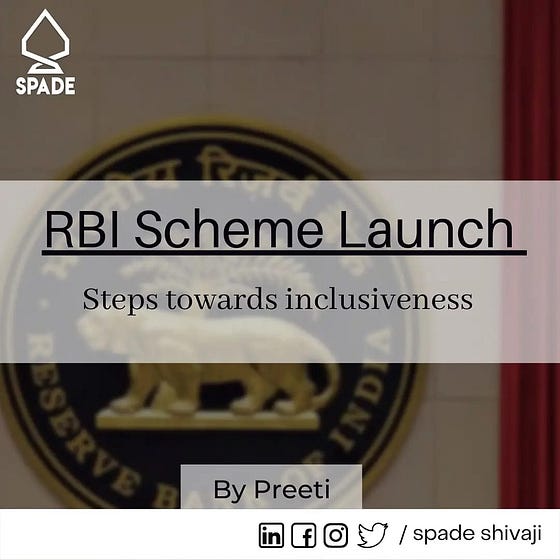
RBI Scheme Launch- steps towards inclusiveness
Prime Minister Narendra Modi inaugurated two Reserve Bank of India (RBI)
customer-centric initiatives on Friday, named The Retail Direct Scheme and the Reserve Bank
Integrated Ombudsman Scheme.
The Prime Minister said these programs may broaden the scope of investment in the country
and make access to capital markets easier and more secure for investors, promoting financial
inclusion. He emphasized the citizen-centric nature of these schemes, saying that the
strength and proactiveness of a democracy’s grievance redressal system is the biggest
touchstone on any democracy and that the Integrated Ombudsman Scheme will go a long way in
that way.
The retail direct scheme will allow small investors to receive guaranteed returns by
investing in securities and also assisting the government in raising funds for
nation-building. The PMO stated that “investors will be able to simply open and maintain
their government securities account with the RBI online at no cost.”
The governor of the Reserve Bank of India first mentioned the proposal in February 2021. He
referred to the scheme as a “major structural transformation.” Investors would need to open
and maintain a Retails Direct Gilt Account (RGD) with the RBI to invest in government
securities, according to the central bank.
Individuals can open an RDG account by filling out an online form and authenticating and
submitting the form using the OTP received on their registered mobile and e-mail ID. Payment
for the same can be made from the associated bank account via online banking or UPI.
The Reserve Bank-Integrated Ombudsman Scheme (RB-IOS) aims to improve the grievance
resolution procedure for resolving customer complaints against firms regulated by the
Central bank. According to the PMO, the scheme is based on the concept of “One Nation, One
Ombudsman,” with a single platform, one email address, and one address for customers to
complain.
The RBI ombudsman scheme’s single national-level integrated digital portal is expected to
ensure standardization and a streamlined user-friendly mechanism, adding value to the scheme
and bringing customer delight and financial inclusion.
He stated that non-performing assets have been identified with transparency in the last
seven years, emphasizing that the current government is focused on resolution and recovery.
He claims that recapitalization of public sector banks, bringing cooperative banks under
RBI’s jurisdiction, and other changes have increased public confidence in the banking
system.
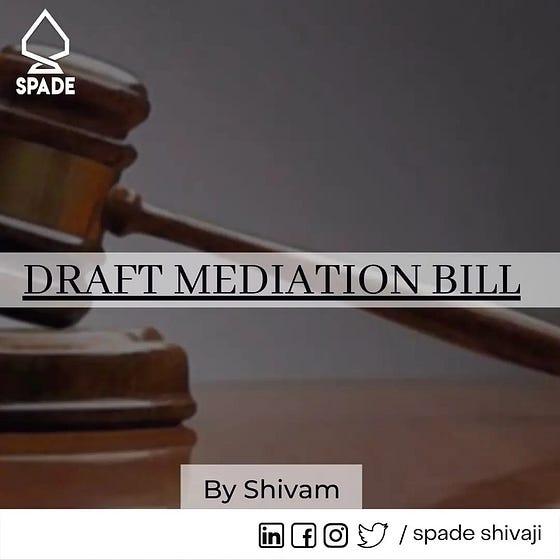
DRAFT MEDIATION BILL
On 5th November’21, the Government of India has issued a Draft Mediation Bill
for public consultation that has led to the establishment of the Mediation Council of India.
The drafted bill proposes for pre-litigation mediation and at the same time safeguards the
interest of the litigants to approach the competent adjudicatory forums and courts in case
of urgency. According to the draft Bill, the successful outcome of mediation in the form of
the Mediation Settlement Agreement has been made enforceable by law. It’s an act to promote
and encourage the mediation facility to resolve the disputes that arise between the
commercial parties and enforce domestic & international mediation settlements agreements.
It’s an online and very cost-effective mediation process. Also, it provides a platform for
mediators to register themselves and promote the community of mediation. This practice of
mediation has been proven effective for resolving a wide range of problems. Also, it has
gained popularity worldwide in solving problems amongst individuals, corporate users,
governments, judiciary, lawyers, etc. Since it is a consensual agreement between the
parties, the challenge towards the same is on limited grounds. Mediation is a great way to
solve traditional legal disputes because party cannot be compelled to participate, except
when ordered by Court. Since there’s no set formula for mediation so it’s flexible and
there’s no biasness involved.
In a nutshell, it’s a great bill that will save time. Also, if we see it through the
monetary perspective, it will save money. In addition to this, it’s convenient to use and
one doesn’t have to visit the court or anywhere. Companies involved in the case will have
equal say. Also, the relationship between the parties have will be preserved.
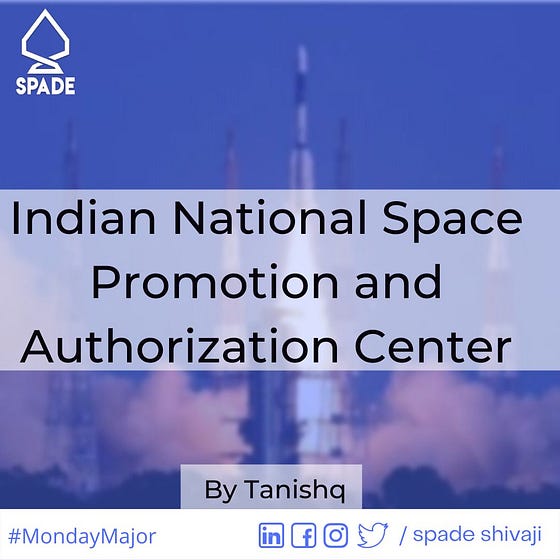
Indian National Space Promotion and Authorization Center
“The cooperative structure never encourages huge bureaucratic systems, for it
knows that mammoth bureaucracies cannot be sensitive to the needs of people.”
-Vikram Sarabhai
Space entrepreneurship is a new tangent to accelerate the growth in the Indian economy after
restructuring ‘Aatmanirbhar Policy’. Under this new restructure, India's private sector
would be able to participate in India’s space journey through the new establishment of
Indian National Space Promotion and Authorization Center (IN-SPACe).
The development of the policy isn't just on paper but realized, which is evident from the
appointment of Pawan Kumar Goenka as Chairperson of IN-SPACE and, the icing on the cake is
the announcement of de-regulating the telecommunication sector. But this evidence also came
with the conducive framework of law, which isn’t creating a precise model for the actions,
responsibilities, and authorities of IN-SPACe.
Following and accepting these vulnerabilities in the policy has become a pattern in the past
due to the traditional school of thought. These vulnerabilities have led to the turmoil in
the Bilateral Investment Treaties which is evident from the past conflicts between the
Government of India and other international trade-based countries and organizations.
However, that school of thought is beginning to change, and it is evident from the
developments in the space sector.
The need for a transformation of the Indian space policy landscape goes beyond just the need
for creating jobs or for improving tax revenues from the market for space activities. -
Ashok G. V.
But as a result of understanding the responsibility of development of the primary nation in
the critical areas such as defence, space is led in the hands of the private sector,
therefore, the key interest shifts to comply with international policies. Our need becomes
the development of other nations rather than ours.
Whereas with the introduction of the policy, the decision of the space bureaucrats will be
assured to be taken under the guidance of policy, and will promise immune to the red-tapism,
simultaneously complying with international trade and Investment obligations. More
importantly, the brilliant scientist carrying the vision of entrepreneurship will be
developing the nation with the sense of perpetual national support with their corroborate,
under a policy that complies with the international trade and investment obligations. The
policy may turn out to be an effective and powerful tool to achieve the ambition of being a
powerful player globally in the space sector.
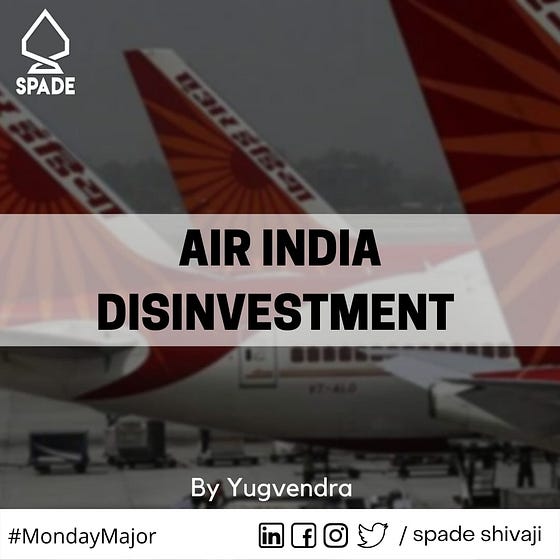
Air India Disinvestment
The process of divesting Air India has been going since the last decade.
Eventually, the ultimate winners are the TATA Sons, the holding company of TATA Group. And
ironically, the airlines came back to the Company who started it in 1932. Air India was
originally called TATA Airlines in 1932, and in 1946 the name was changed to Air India. The
Government owned 49 percent of the holdings at that time but the company was ultimately
nationalised in 1953. This wasn’t the first time that the government tried to sell the
Airlines. The first attempt was made in May 2000, after which another attempt was made in
2017 and now finally the airlines has been officially sold.
Some of the reasons why the government wanted to sell the airlines was the sudden rush of
low-cost competition with the private airlines entering the market. Air India took a severe
hit in both domestic and international markets and also subsequently lost its quality of
services and hospitality. In May 2000, there were attempts to sell the Union Government’s
stake and the cabinet tried to sell 60% of the government’s shares in the carrier, however
it failed due to some reasons. The government desperately tried to keep the carrier alive by
doing a merger with Indian Airlines in 2007 and then with a Rs 30,000 crore bailout in 2012.
But sadly, none of this worked.
The Modi government tried to sell it in 2017–18 but there was no bidder, and it was because
the government wanted to hold the minority stake and wanted the bidder to assume the bigger
portion of the debt. However, this time the government offered up 100% of its stake and Rs
23,000 crores as debt from Rs 60,074 crores. Hence, there are reasons to believe that this
Divestment may actually be for the good of Air India and might bring changes for the good in
their brand name.
Highlights
1. TATA Group takes back control of AIR INDIA after 60 years.
2. Several failed attempts to sell Air India in the past two decades.
3. Air India took a hit after the introduction of private carriers in 1990.
4. The Modi government tried to sell Air India in 2017–18 but there were no
bidders.
5. Finally sold now to TATA SONS.
AIR INDIA is now in the great hands of TATA Group.
By Yugvendra
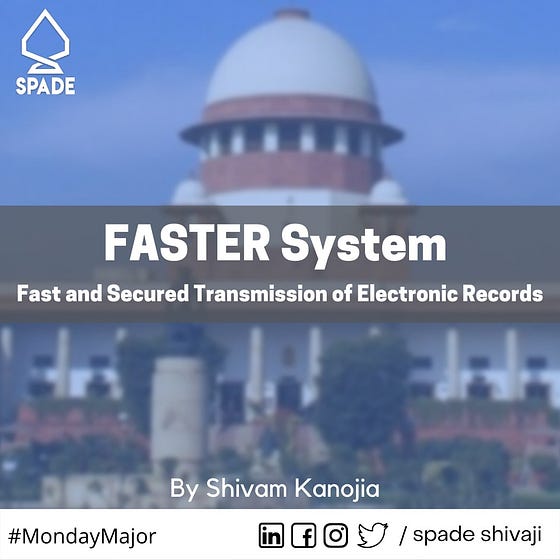
FASTER System
On 23rd September’21, the Supreme Court of India implemented a system known
as the FASTER system that stands for Fast and Secured Transmission of Electronic Records.
It’s a system that helps in accelerating the process of transferring e-authenticated copies
from courts to prisons. This system is implemented to reduce the delays that pop up at the
time of interim orders, stay orders, bail orders and, records of proceedings of prisoners.
Through this system, the courts can send the instructions via a secured e-communication
system to the officers at duty in the prisons. An E-communication system will help in the
smooth flow of execution and non-execution of orders from the court.
Article 21 will be maintained effectively and efficiently that says, “No person shall be
deprived of his life or personal liberty except according to a procedure established by
law”.
Before this system was implemented, the unconvicted prisoners that were in jail
had to
wait for days for the orders of the court to prison, asking them to show up in the court for
the trial for their offense. As there are always two sides of the same coin; therefore, the
only problem that can arise is of giving internet facilities to all the 1350 jails
(according to 2019 data), and also, it can lead to the outspread of critical information
from behind the bars.
However, implementation of the FASTER system is a good step towards an Eco-friendly
Environment. Considering the data,11 billion sheets (approx.) are being used by the Indian
judiciary every year out of which, say 0.5% of these sheets are used in these courts for
prison bail, interim order, documents, etc.,
so as a result of the implementation of
this
system, roughly it can save up to 40 lacks sheets per year which will indirectly help in
conserving trees.
by Shivam Kanojia